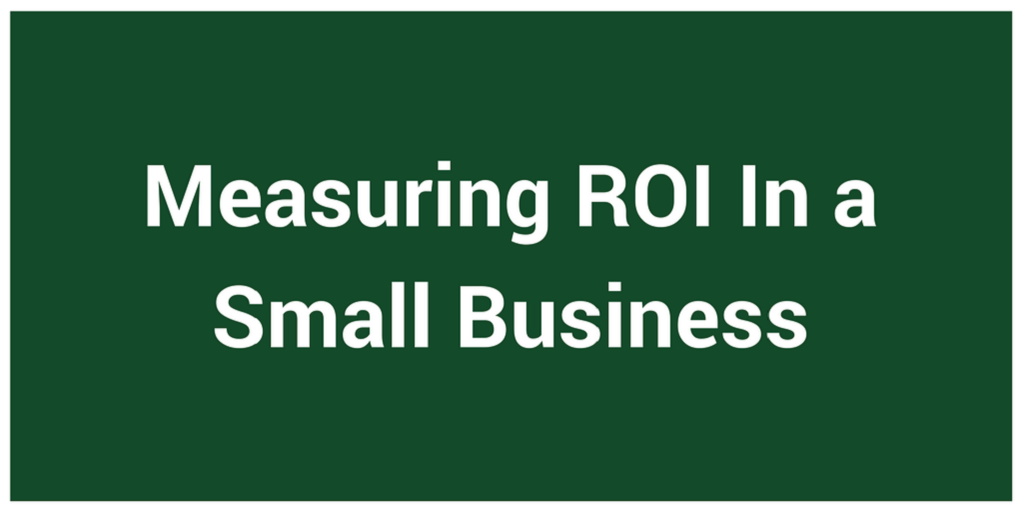Measuring ROI In a Small Business

In a small business where accurate data can be hard to find, putting an expectation on measuring ROI can seem like a pipe dream. However, it doesn’t have to be.
ROI = Return on Investment
A clever business term used when summing up “was it worth it?”
There are easy steps to measure ROI, even if you don’t have a ton of quantitative data.
1. Define the goal
What would make the concept/employee/advertising/equipment worth it? (This is the minimum, not the windfall)
2. How will we know the answer?
This is where your answer may not be heavy data: phone volume, email address count, bids requested, shorten lead time – all of these are quality results on a small business investment.
3. When will we measure ROI?
This is often tough. The longer we wait to evaluate a front-end cost (like a trade-show), the better, but some things have high later cost structures, making aborting a challenge.
4. Do this goal setting on a smaller level for alternate goals
If you go to a trade-show, you may expect sales leads. However, you should consider setting up side goals to find alternate vendors, do some recruiting outreach, and sign people up to receive the catalog.
Setting several goals to measure ROI for your small business is the key to achieving them. If you don’t state them, we leave achievement to chance, which is always expensive.
About the Author fisherbusiness
Contact us
Related Posts
Unlocking the Power of Profit First: A Comprehensive Guide
Simplify Your Bookkeeping with QuickBooks Rules: How Outsourced Bookkeepers Can Optimize Efficiency
Demystifying Monthly Closing in Small Business: Why It’s Essential and How Outsourced Bookkeepers Can Help
Understanding Your Profit & Loss Report: 5 Key Insights for Business Success
